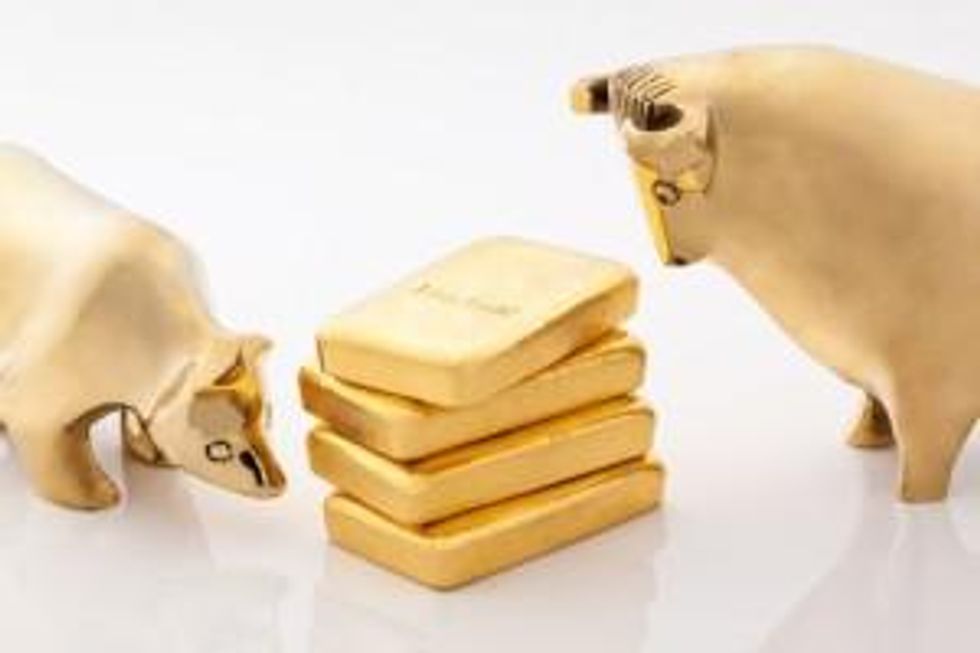The Conversation (0)
Sandstorm Gold: Investing in Gold Streams and Royalties
Oct. 04, 2015 01:05AM PST
Precious Metals InvestingSandstorm Gold could be a way for investors to invest in gold without all the risk.
This article was originally published on Gold Investing News on April 21, 2014.
Unlike the majority of the companies in the mining sector, Sandstorm Gold (TSX:SSL,NYSE:SAND) is not a mining company.
To help investors better understand the role of a royalty and streaming company, Gold Investing News (GIN) spoke with Sandstorm Gold’s CEO, Nolan Watson.
GIN: To start on an educational note, Sandstorm is different than most companies in the resource sector because it is a gold royalty and streaming company. What does that mean exactly?
NW: What does that mean exactly? Great question. The royalty part of the business model is a much smaller portion of our business model. It’s effectively where we have the right to a certain percentage of a mining company’s revenue, whatever that may be. For example, if we have a 1-percent royalty, we get 1 percent of the revenue. Having royalties on various mines around the world accounts for 10 to 15 percent of our cash flow every year.
The stream is similar to a royalty, but has important differences. Stream is where we will have the right to purchase a certain percentage of their production at a fixed price. So for example, we might have a stream that says we have the right to buy 17 percent of a company’s production at $400 an ounce. They’re selling 17 percent of it to us at $400, and we buy it at $400 and we sell it at whatever the market price happens to be on that day. Today the price of gold is approximately US$1,300 an ounce. We’ll buy it at $400. We’ll sell it $1,300. It will make the difference, which is $900 an ounce. So we call it a stream because it’s sort of a stream of cash flow that’s coming to us as we’re buying and selling gold under those contracts.
GIN: How do you decide when to do a stream or a royalty deal?
NW: When we do a stream it’s when someone is either already in production or they are about to go build the mine right now, so they’re very close to production. We could buy a royalty on an asset that’s producing, we could buy a royalty on an asset that’s about to go into production or we could buy a royalty on an asset that we think will go into production one day, but it might not be for many years. That’s the one difference between a stream and royalty. We typically won’t complete a streaming transaction on an asset that’s many, many years from production.
GIN: How is investing in Sandstorm beneficial for investors?
NW: There are a couple disadvantages of investing in mining companies. One is that you don’t get very much diversification. A mining company might have one, two or three mines. If that one mine goes down, then the company is in very serious trouble temporarily. Whereas at Sandstorm, we have 35 different streams and royalties and 13 of those are cash flowing right now. Our aim is to be a company that provides mining-like returns, but with much less risk and much more diversification. We are in countries all over the world, we’re associated with assets all over the world. So we’ve got a lot more stability in our base level of business and cash flow.
The second disadvantage would be that the mining industry is challenging and costs continue to go up. We are much less affected by that because we buy at a fixed price per ounce for all of our streams. The cost of mining will double over the next 15 years because central banks are printing lots of currency and inflation causes costs to go up. Our cost that we’re buying the ounces at does not go up. Again, more leverage to the upside and more stability.
GIN: What are the most important things Sandstorm looks for when it evaluates companies?
NW: Well, we look first and foremost for assets that are what we call “management-proof assets.” Those are just solid, strong assets that will have a low cost of production and are simple to execute from a technical perspective.
We try to stay away from things that are overly complex metallurgically or very complex from a how-they-mine-it perspective. We try to focus on assets that are so simple that anybody could run them. Having said all that, we still try to invest in assets that we think have reasonable management.
GIN: Like you mentioned earlier, there are risks involved in mining. As Sandstorm invests in a portfolio of companies, do you try to mitigate the risks, particularly geopolitical, in the basket of companies in which the company invests?
NW: Yes, certainly we try to diversify our geopolitical risk. From the perspective of the actual mine and the quality of the mine itself, we try not to do deals on assets that are going to be high-cost producers. So if someone comes to us and says, “we’re going to build a mine and we think we can produce gold for $1,200.” We’ll say, “no, thank you. That’s too expensive. What if the gold price goes below $1,200, in which case you’re out of business and we’ve lost all of our money?” We try to focus on assets that can produce gold that are something less than $1,000.
GIN: Yes, I can imagine. So how are royalty and streaming deals impacted by mergers and acquisitions? Or are they not affected?
NW: The way the contracts are always structured is that they go with the mine, whoever owns the mine. If the company merges or gets bought out, then the stream just goes with the mine.
GIN: Okay, so it doesn’t really impact the company in the end.
NW: Usually mergers and acquisitions are good things for us. If someone is buying the company that we’ve made a deal with, it’s usually a bigger company, which means it’s usually stronger. It could put more money into the development of the asset.
GIN: I noticed that although 2013 has been pretty challenging for the mining sector overall, Sandstorm managed to come out with record gold sales. What made that possible?
NW: We started the business five years ago and over the last five years we’ve been making various investments. With some of those investments it can take awhile to build the mine, and so some of those mines are just ramping up their production now as they come into their own. Every year, year over year, we’ve been able to recognize higher production from investments in the past. We’re going to continue to make investments and we’ve got $120 million of cash on our balance sheet. We’re continuing to look into acquiring new streams and royalties. We hope to have record sales every year.
GIN: That’s a positive way to end each year. Now, on the not so positive side, 2013 also brought the collapse of Colossus Minerals. What did Sandstorm learn from its investment in Colossus?
NW: I think we’ve had a number of takeaways. The number-one takeaway we’ve had from it is from a due diligence perspective. Most people refer to what they call fatal flaws — a thing that if it happens, then it’s not a mine at all. We were certainly looking for all types of fatal flaws, but then there’s also a second-level type of risk — things that you go, “yeah, that might happen. It could happen. If it does happen though, they’ll just be able to raise more money and fix it. ” For example, water was a problem. We said, “water is a problem. It can absolutely be dealt with. It just needs some more time. It needs more boreholes and more pumps to pump the water out and that will be fine. It might cost more money, but they’ll be able to raise it.”
Lo and behold, 2013 came along and no mining company in the world could raise any amount of money. Water became a problem and Colossus couldn’t raise the money. Water is still a solvable issue there, but they got killed because they needed the money during a time when no one could raise any money.
We decided that we no longer want to count on the capital markets when we make an investment decision. We want to invest only in assets that we think either have enough money to get into production or the potential risks are small enough that we can cover the difference.
GIN: That’s a pretty good way of looking at it. As far as areas of interest, is Sandstorm currently looking at any countries for further investment?
NW: We’re looking all over the world. We do have a list of countries that we won’t invest in at any given time. That list changes as governments around the world change. We’re looking in North America, South America, Africa, Europe and Asia. The countries we won’t invest in would obviously be Russia, Venezuela and countries like that.
GIN: So you’d stay away from countries that are more prone to resource nationalism.
NW: Absolutely.
GIN: Good plan. Now, as far as commodities prices go, gold hasn’t fared too poorly this year. Can you share with me some of your thoughts on what we might see for 2014?
NW: I think 2014 is going to be a year of small ups and downs, and generally sideways markets. I think there will be times where we go, “finally the gold market’s coming back.” There’ll be days where we go, “oh, my gosh. I didn’t know. I thought we hit the low and we haven’t.” Excitement and fear all in the same year. I think we’ll probably end the year not too far from where we are right now.
I am bullish on the longer-term basis. I do think that central banks are going to continue printing money around the world. Whether or not the Fed continues its tapering or not, I’m not sure. But I do think that the Europeans are going to have to continue printing money, as are some Asian countries. I think that there’s going to be a lot of uncertainty in China. One of the largest sources of demand for gold right now is China, and uncertainty there causes the gold price to go higher. I think that 2015 and 2016 should be better years for gold.
GIN: I guess 2014 is just going to keep us on our toes. Is there anything I’ve missed that would be good for our investor audience to know?
NW: I think the one main message that we’re trying to get across with Sandstorm right now is that this is the first time that all of the material assets that we’ve invested in are now up and running in commercial production. We’re pretty steady from a development risk perspective. We’ve got lots of cash flow coming in, we have tremendous amounts of cash in the balance sheet and we’re now looking for our next phase of growth.
GIN: Perfect. Thank you very much for speaking with me.
NW: Thank you.
Securities Disclosure: I, Vivien Diniz, hold no investment in any of the companies mentioned in this article.
Editorial Disclosure: Interviews conducted by the Investing News Network are edited for clarity. The Investing News Network does not guarantee the accuracy or thoroughness of the information reported. The opinions expressed in these interviews do not reflect the opinions of the Investing News Network and do not constitute investment advice. All readers are encouraged to perform their own due diligence.





